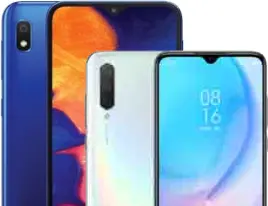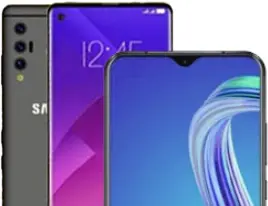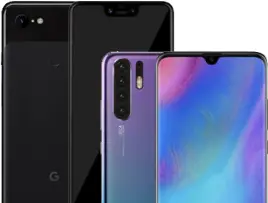
Vivo X21i
Specifications
- 6.28 inchesDisplay
- 4 GB RAM OR 64 GB 6 GB RAMRAM
- 3425 mAhBattery
- 12 MPBack Camera
| General Features | |
|---|---|
| Release Date | 01 May 2018 |
| SIM Support | Hybrid Dual SIM (Nano-SIM, dual stand-by) |
| Phone Dimensions | 6.08 x 2.95 x 0.28 in |
| Phone Weight | 159 g |
| Operating System | Android 8.1 (Oreo) |
| Display | |
|---|---|
| Screen Size | 6.28 inches |
| Screen Resolution | 1080 x 2280 pixels |
| Screen Type | Super AMOLED capacitive touchscreen, 16M colors |
| Screen Protection | null |
| Memory | |
|---|---|
| Internal Memory | 128 GB |
| RAM | 4 GB RAM or 64 GB 6 GB RAM |
| Card Slot | microSD, up to 256 GB (uses SIM 2 slot) |
| Performance | |
|---|---|
| Processor | Octa-core (4x2.0 GHz Cortex-A73 & 4x2.0 GHz Cortex-A53) |
| GPU | Mali-G72 MP3 |
| Battery | |
|---|---|
| Type | Non-removable Li-Ion 3425 mAh battery |
| Camera | |
|---|---|
| Front Camera | 24 MP |
| Front Flash Light | null |
| Front Video Recording | No |
| Back Flash Light | Yes |
| Back Camera | 12 MP |
| Back Video Recording | 1080p@30fps |
| Connectivity | |
|---|---|
| Bluetooth | Yes |
| 3G | Yes |
| 4G/LTE | Yes |
| Radio | FM radio |
| WiFi | Yes |
| NFC | null |
Highlights
Copy, copy and some more copy! Vivo’s come up with its own iPhone X like clone with not one but two releases. We’ll help you get acquainted with the X21i. The smartphone, as mentioned above, is a fine copy of the aforementioned iPhone and it’s hard to tell the difference as to why did Vivo choose to go with both the X21 and X21i at the same time?
Design and build both inspired from the iPhone X
The Vivo X21i masterfully mimics the iPhone X not only by design but by build quality as well. While most other smartphone manufacturers have copied the iPhone’s looks, Vivo went a step ahead by finely copying its build materials as well.
To put into simpler words, the smartphone features a dual-glass panel build with a finely polished aluminum frame residing between the two. Dimensions further add to the gloss of the smartphone as the device features a diva-like 7mm width and 159g weight that do full justice to the X21i’s beautiful exterior.
There’s very little to differentiate between the two; the smaller notch and the LED flash of the primary camera not residing between the dual camera sensors are the only things that separate the two.
The front panel belongs exclusively to display
Like the iPhone X, the X21i’s display stretches from the very top of the smartphone’s front panel to its very bottom.
Statistically, the Vivo X21i features a large 6.28 inches Super AMOLED capacitive touchscreen with 402ppi pixel density. That’s exactly what you’d wish for from a large display as it’s fully capable to produce a stunning 1080p HD resolution atop its full-stretched display giving you excellent graphics and sharper details in the process.
Same primary camera but buffed-up selfie camera
It was no surprise to see the Vivo X21i featuring a dual primary sensor as they’ve become the norm nowadays. What’s important is their prowess and the smartphone’s 12 + 5 MP sensor with dual-pixel phase detection autofocus and an LED flash is filled with loads of it. If you’re camera-savvy, the X21i has finely got you covered.
The selfie sensor is a beast on its own with a large 24 MP sensor. That’s even more that what many primary camera sensors can offer!
Hardware finely rounds-off the Vivo X21i
It would’ve been unacceptable for Vivo to go easy on the hardware after what we’ve witnessed above in the X21i. The smartphone is powered by a powerful hybrid octa-core processor with the two following variants:
- 128GB internal storage + 4GB RAM
- 64GB storage + 6GB RAM
Both the variants are power-packed and to ensure further compliance with modern-day standards, the X21i houses loads of other modern features that include a rear-mounted fingerprint scanner, fast battery charging and a very respectable non-removable 3425 mAh battery to power-up that enables the smartphone to stay up and running for an adequate amount of time.
An external card-slot and colour schemes that include Black, White and Red will look fantastic atop the X21i without any doubts whatsoever.
Vivo X21i pros:
- Extremely good build quality with nifty dimensions
- A big, 1080p HD display
- Excellent cameras both at the front and back
- Superb hardware with both variants packed with features
Vivo X21i cons:
- Heavily copied from the iPhone X but we guess that wouldn’t bother many people





















































































